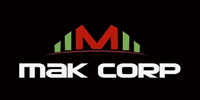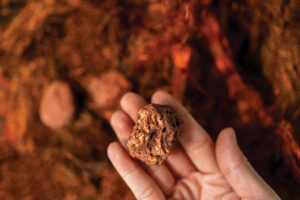Good news: a big chunk of miners actually spend more on their projects

Pic: Getty
A key point for some when it comes to investing in resources stocks is just how much is being spent on projects versus staff pay cheques and the money being funnelled into just keeping the lights on.
The good news is a large chunk of ASX-listed explorers and miners are doing the right thing and sinking more cash into their projects.
Data provided by MakCorp shows that 63 per cent of ASX-listed resource companies spend more on their projects, including exploration and development, than on admin and staff.
Of the 692 companies that released reports for the first quarter of the 2019 financial year, 436 spent more on their projects.
The average worked out to about a 30 per cent spend on admin and staff with the rest devoted to advancing projects.
But that leaves 256 companies that spend more on admin and staff, averaging 71 per cent.
There could be a number of reasons that is the case though.
For example, the companies spending low or no money on projects could be in suspension or awaiting finance.
Meanwhile, others that are advancing projects may be hiring more staff or incurring costs related to feasibility studies.
So investors should do some research and speak to the resources companies they are considering investing in.
- Subscribe to our daily newsletter
- Join our small cap Facebook group
- Follow us on Facebook or Twitter
Self-funded retiree Elizabeth Bradshaw thinks it’s “very important” to look at how much a company is spending on its projects versus its corporate costs.
“I haven’t really balanced that and I think a lot of shareholders get nervous about it,” she told Stockhead this week at a women-focused investor session hosted by manganese explorer Bryah Resources (ASX:BYH).
“I never thought that the shareholders would be able to dominate how much people receive as a bonus but that’s finally coming through. We’re actually having a say in that.”
An office is even better when it’s free
Advent Gold, which is looking to launch an initial public offering and list on the ASX, is extremely passionate about keeping its admin costs low.
Boss Adam McKay said in a LinkedIn post last week that he looked at lots of commercial offices ranging in price from $750 to $2500 per month.
But said he was much happier working his “butt off” in a free space provided by a friend for the time being.
“Let’s say I am saving $1200 per month. That’s approximately 10 metres of RC [reverse circulation] drilling in NZ,” Mr McKay explained.
“Over a year, that’s 120 metres of RC drilling. If I need an impressive space for meetings, I’ll make use of brokers’ offices or short-term meeting room hires.
“Times are changing. Would you back a company that wants every single dollar possible going into the ground, or one with a nice office and excessive staff numbers?”
Lion Selection Group director Hedley Widdup told Stockhead that how much of a company’s cash goes into the ground is a factor he weighs up as an investment manager.
“If there’s a raising for say $2.5m, how much of that is going to go into the ground or the project and how much of it is going to go into wages and other things?
“Some companies are much better at managing that than others.
“There are some very, very well paid executives going around small companies who are achieving comparatively very little.
“On the opposite end of the scale I’ve seen some very impressive executives who own a meaningful amount of shares, which they’ve bought with their own money, and don’t get paid a hell of a lot.”
Stockhead is proud to use MakCorp as a provider of accurate and reliable data on ASX-listed mining stocks. For more information head to MakCorp’s website.

This article does not constitute financial product advice. You should consider obtaining independent advice before making any financial decisions.
UNLOCK INSIGHTS
Discover the untold stories of emerging ASX stocks.
Daily news and expert analysis, it's free to subscribe.
By proceeding, you confirm you understand that we handle personal information in accordance with our Privacy Policy.








